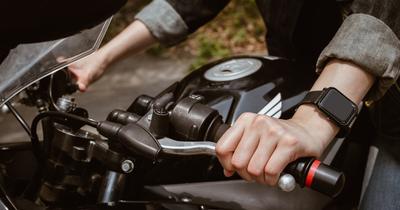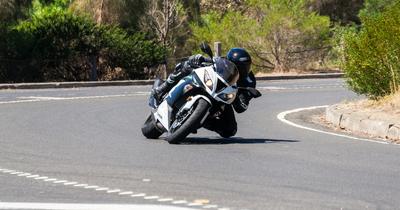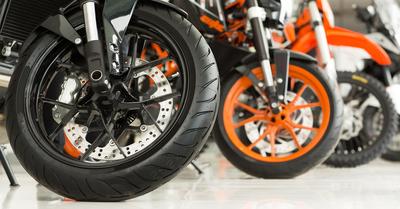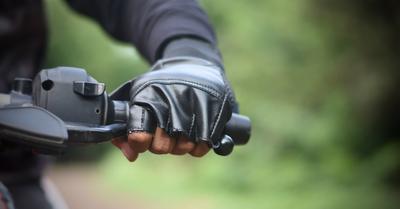Why Your Motorcycle Battery Won't Charge While Riding
Riding down the highway on a motorcycle, with the wind against your face, might be one of the exhilarating experiences for enthusiasts, but nothing brings that joy to a halt faster than a motorcycle battery that won't charge. When you find your motorcycle's battery dying while you're trying to enjoy a ride, it becomes essential to understand the underlying issues.
The charging system of a motorcycle is a vital component that ensures your motorcycle runs smoothly, powering the ignition and lights while maintaining battery life during rides. Motorcycle batteries, like any component, have a lifespan and can fail to charge due to several reasons that might not be immediately apparent.
An electrical system's functionality relies on a series of interactions between the battery, alternator, and the motorcycle’s various electrical components, and a malfunction in this system could lead to charging issues. It's crucial to not only be able to identify the symptoms of a failing charging system but also to know the probable causes and fixes.
Charging system troubles can leave you stranded, but knowing the common reasons why your motorcycle battery won't charge can be a lifesaver. Each component of the charging system plays a pivotal role in ensuring your ride is ready when you are. Let's break down the typical issues and their solutions, so you can keep your motorcycle in top shape without unwanted surprises.
Faulty Alternator
The alternator is key in converting mechanical energy to electrical power for your motorcycle. If your bike's battery isn't charging, the alternator might be the culprit.
- Check: Use a multimeter to test the alternator's output.
- Fix: If the voltage is below standard levels, repair or replace the alternator.
Damaged Regulator/Rectifier
The regulator/rectifier stabilizes the voltage to the battery. Damage here means trouble for your battery.
- Check: Look for signs of burning or melting.
- Fix: Replacement is usually the only option.
Poor Battery Connections
Loose or dirty connections can disrupt the flow of electricity.
- Check: Examine battery cables and terminals for tightness.
- Fix: Tighten them and clean off any corrosion or dirt.
Corroded Terminals
Corrosion at the terminals can prevent your battery from charging.
- Check: Visually inspect for blue/green deposits.
- Fix: Clean the terminals with a wire brush and apply anti-corrosion spray.
Worn-Out Battery
Batteries have a finite lifespan and can only be recharged so many times.
- Check: Test your battery's voltage and look for signs of sulfation or leaking acid.
- Fix: If the battery is old or damaged, it's time for a replacement.
Insufficient Riding Time
Short trips may not provide enough time to fully charge the battery.
- Recommendation: Take your bike for longer rides or use a trickle charger overnight.
Electrical System Issues
Short circuits, blown fuses, or a faulty ignition switch can prevent charging.
- Check: Inspect the fuse box and test the ignition switch.
- Fix: Repair any broken wires and replace any blown fuses.
Stator Problems
A bad stator won't generate enough alternating current to charge the battery.
- Check: Test the stator's output with a multimeter.
- Fix: If faulty, it requires replacement.
Voltage Regulator Failure
The voltage regulator ensures your battery gets the right amount of power.
- Check: Look for signs of overheating or physical damage.
- Fix: Replace a malfunctioning voltage regulator.
Wiring Faults
Damaged or worn wiring can interrupt the current to the battery.
- Check: Visually inspect all wiring.
- Fix: Replace any broken wires.
Excessive Electrical Accessories
Extra accessories like heated grips or phone chargers can overload the system.
- Recommendation: Only use necessary accessories, and consider upgrading your charging system to handle the extra load.
Cold Weather
Low temperatures can affect your battery's ability to hold a charge.
- Recommendation: Keep your motorcycle battery warm using an insulation blanket.
Battery Age
Over time, all batteries lose their capacity and ability to hold a charge.
- Check: Look at the expiration date or test your battery.
- Fix: Ultimately, an old battery will need replacing.
Fixing a motorcycle battery that won't charge involves inspection, diagnosis, and often replacement of key components. Keeping these tips in mind will not only help you troubleshoot but also get you back on the road with minimal downtime. Keep your motorcycle maintained, and it'll return the favor with reliable performance.
Care and Maintenance of Your Motorcycle Battery
Regular upkeep of your motorcycle battery not only ensures reliability but also extends its life. Proper maintenance involves a series of straightforward checks and procedures designed to keep your battery in optimal condition.
Monthly Checks:
- Visual Inspection: Look for any signs of damage, corrosion, or leaks.
- Terminal Cleanliness: Keep terminals free of corrosion with a wire brush and apply grease to prevent future build-up.
- Electrolyte Levels: If you have a traditional battery, check that the electrolyte levels are above the minimum mark.
Charging:
- Routine Charging: Use a smart charger to maintain charge levels, especially if the motorcycle is not being used regularly.
- Voltage Monitoring: A healthy, fully charged battery should read around 12.6 volts or above.
Storage:
- If storing your motorcycle for an extended period, disconnect and charge the battery periodically to preserve its charge.
Temperature and Environment:
- Avoid exposing the battery to extreme temperatures, both hot and cold, which can shorten its lifespan.
Proper Installation:
- Ensure the battery is correctly installed and that the terminal connections are secure and tight to prevent power loss.
By incorporating these maintenance tips and frequent battery service into your motorcycle care routine, you’re more likely to enjoy a trouble-free ride and prolong the longevity of the battery. Remember, diligent maintenance translates into reliability and performance on the road.
Frequently Asked Questions
In the journey of a motorcyclist, facing a non-charging battery while riding can be perplexing and frustrating. This section aims to address common inquiries and provide an understanding of the potential causes and solutions for a motorcycle battery not charging during your ride.
How can I troubleshoot a motorcycle battery that isn't charging while I'm on the go?
Troubleshooting a motorcycle battery begins with checking the basics: ensuring the battery terminals are clean and secure can solve the charge issue. Motorcycle Battery Won't Charge While Riding? offers in-depth reasons and appropriate fixes you should consider.
What steps should I take if my brand-new motorcycle battery refuses to charge?
When a new motorcycle battery fails to charge, step one is to verify the installation and then check for a functioning charging system. Refer to the guidance provided by Motorcycle Battery Is Not Charging? on further actions, which may include testing the stator and the voltage regulator/rectifier.
Is it possible to revive a dead motorcycle battery, and how would I go about it?
Reviving a dead motorcycle battery often involves attempting to recharge it using a trickle charger or battery tender. For insights into the intricacies of this process, ThrottlePack's guide might be of help. However, it is important to recognize when replacement is the more sensible choice.
Could there be an issue with my motorcycle's charging system if the battery drains during a ride?
Yes, a draining battery during rides can be indicative of a faulty charging system. Elements such as the alternator or stator might be malfunctioning. Understanding the charging system's workings through sources like Why Is My Motorcycle Battery Not Charging? can enlighten riders on potential issues and solutions.
How does the motorcycle charge the battery during rides, and why might it fail?
The motorcycle charges the battery through the alternator, which generates electricity during engine operation. Failure could result from a faulty alternator, a broken regulator/rectifier, or even an electrical issue. Motorcycle Battery Won't Fully Charge | Here's Why discusses common causes for charging failures and their respective solutions.
Are there common issues with e-bike batteries not charging that also apply to motorcycles?
E-bike battery charging issues can sometimes mirror those found in motorcycle batteries, including terminal connection problems and battery health. Understanding the parallels in battery technologies can be useful when diagnosing charging issues on motorcycles.














